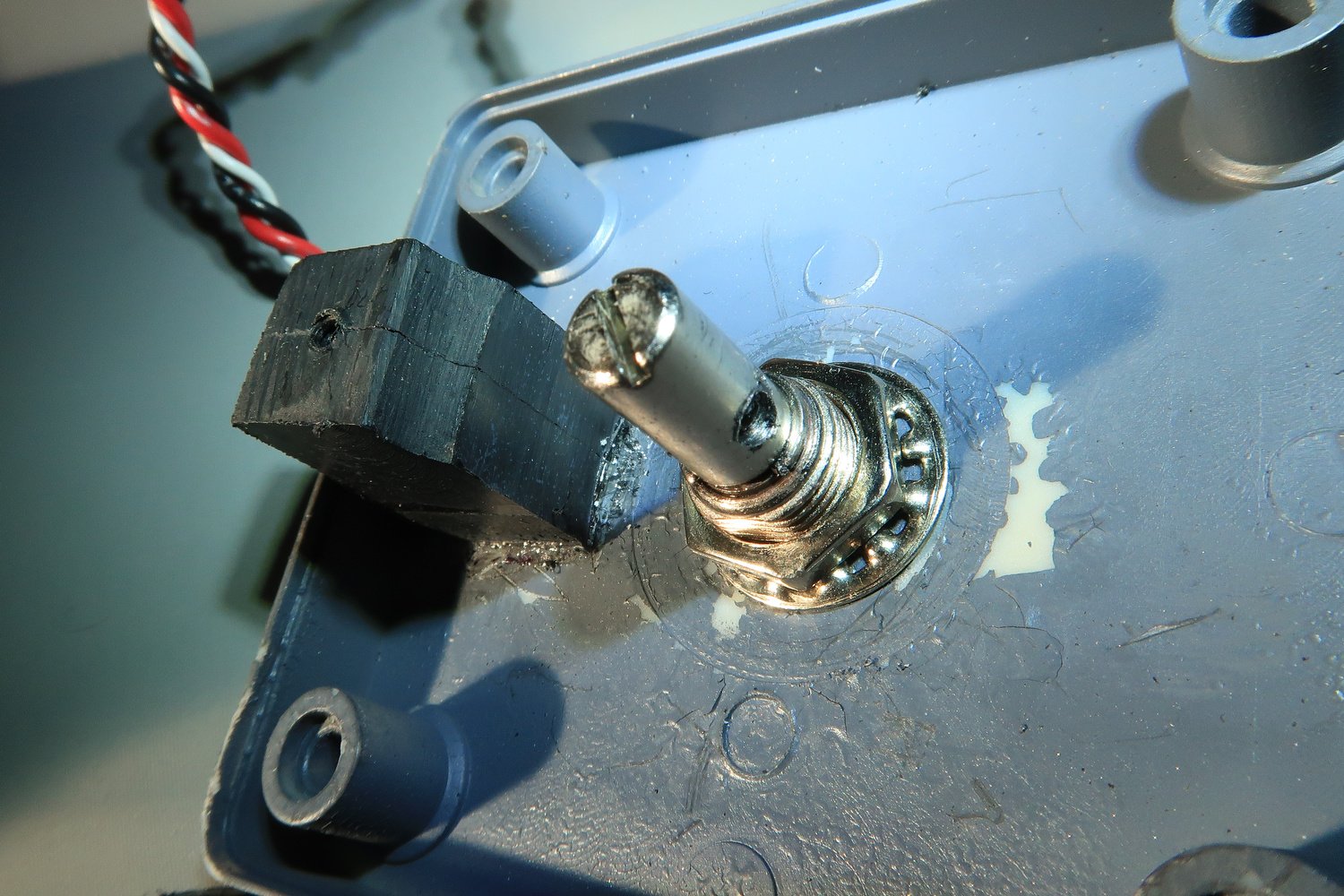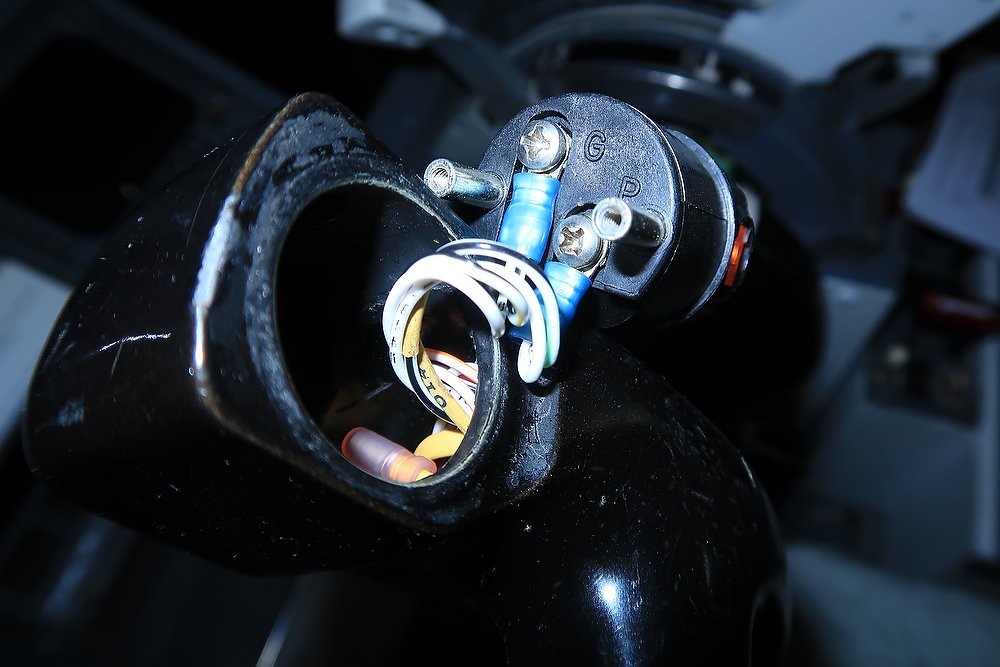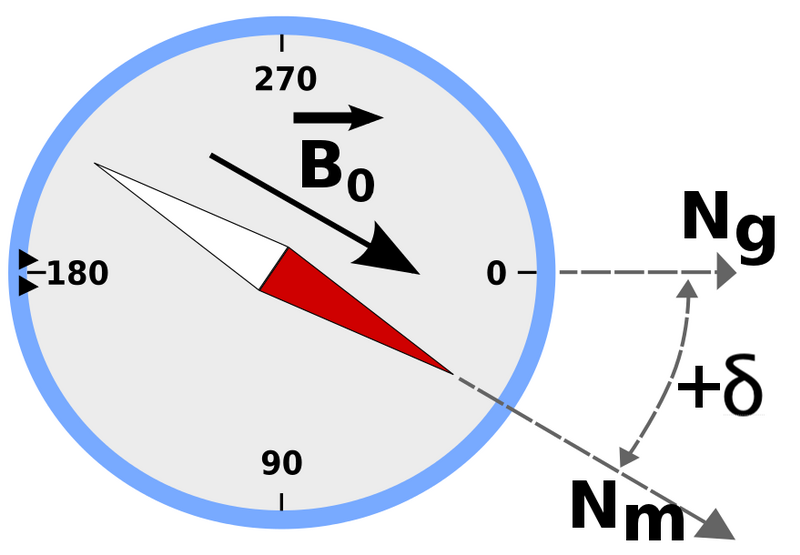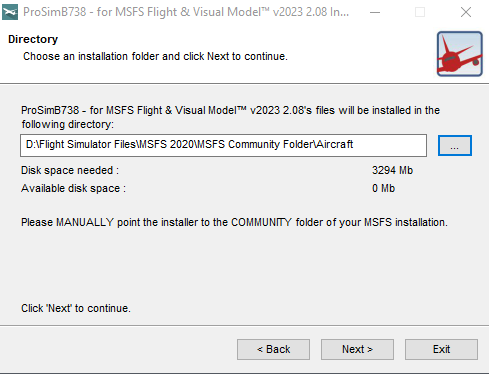The interlock mechanism is felt when the reverse thrust levers are advanced to detent 1. The purpose of the interlock is to restrict movement of the reverse thrust lever until the reverser sleeves have approached the deployed position.
The procedure to use reverse thrust is very straightforward, however, questions arise as to whether to use detent 2 or full maximum reverse thrust, and when to begin reducing thrust and for how long.
Procedure
Following touchdown, without delay, move the reverse thrust levers to the interlock position and hold light pressure until the interlocks release (as the sleeves move rearwards).
For most landings, detent 1 and detent 2 will usually provide adequate reverse thrust (for normal operations). If additional reverse thrust is needed (wet, slippery or short field landing), full maximum reverse thrust can be selected by raising the thrust levers past detent 2 to full maximum reverse thrust.
To come out of reverse, the reverse thrust levers are returned to the detent 1 position, the engine allowed to spool down, and the levers then returned to the stow position.
Practically speaking, after touchdown maintain reverse thrust as required up to maximum thrust until the airspeed approaches 60 knots. Reverse thrust is then slowly reduced to detent 1 and then to reverse idle by taxi speed. Wait until the generated reverse thrust has bleed off, then slowly close the reversers and place them in the stow position.
Bringing the reverse thrust levers to detent 1 is important because it prevents engine exhaust re-ingestion and minimises the risk of foreign object debris (FOD) ingestion. Idle thrust also bleeds off forward thrust from the engines.
The autobrake is disarmed when a safe stop of the aircraft is assured, or when the aircraft reaches taxi speed.
Important Point:
Disarming the autobrake before closing reverse thrust provides a relativity seamless transition which increases passenger comfort (there is no aircraft jolt).
Conditions Required To Engage Reverse Thrust
The reversers can be deployed when either of the following conditions occur:
The radio altimeter senses less than 10 feet altitude;
When the air/ground sensor is in ground mode; and,
When the forward thrust levers are in the idle position.
Until these conditions occur, the movement of the reverse thrust levers is mechanically restricted and the levers cannot be moved into the aft position.
It is important to always deploy reverse thrust as soon as possible following touchdown. Do not wait for the nose wheel to touch down, but engage reverse thrust when the main wheels are on the runway. Timely deployment will increase stopping power; thereby, increasing safety and reducing heat build-up in the brake system.
A study determined that there was roughly a 17 second difference in stopping time when reverse thrust was deployed immediately the landing gear was on the runway as opposed to waiting several seconds for the nose gear to also be on the runway - reverse thrust is most effectual at high airspeeds and its effect decays on a linear scale as forward airspeed decreases.
Important Points:
Reverse thrust should always be used with the autobrake, unless the runway is exceptionally long without a possibility of runway overrun (the reason for this will be explained shortly).
When closing the reversers, always pause at detent 1. Monitor the REV thrust output on the Primary Engine Display (center panel) and stow the reversers only after reverse thrust has dissipated.
Call-outs
The pilot monitoring usually makes the following call-outs:
‘60 knots’;
‘Reversers normal’ - when both REV indications are green;
‘No reverser engine No: 1’ - if no REV indication or colour is amber; or,
‘No reverser engine No: 2’ - if no REV indication or colour is amber; or,
‘No reversers’ - if no REV indications or colour is amber.
NOTE: Annunciators and displays are discussed later in the article.
During landing, the pilot monitoring (PM) should call out 60 knots to advise the pilot flying (PF) in scheduling the reduction of reverse thrust.
When landings are in conditions that are suboptimal (heavy rain, snow, slush, etc), some operators stipulate that the PM operate and control the reverse thrust . This enables the PF to concentrate solely on the landing roll out rather than having the extra responsibility of also controlling the reverse thrust.
This said, although this procedure may lower pilot workload, it can cause problems when the PF is landing on a slippery runway or in marginal crosswind conditions. At these times, the PF may wish to use the reverse thrust in conjunction with the brakes and there is little time to call out instructions to the PM.
Technical Aspects (basic operation)
Each engine on the Boeing 737 Next Generation is equipped with an hydraulically operated thrust reverser, consisting of left and right translating (moving) sleeves. Aft movement of the reverser sleeves cause blocker doors to deflect fan discharge air forward, through fixed cascade vanes, producing reverse thrust.
Hydraulic pressure for the operation of the thrust reversers comes from hydraulic systems A and B, respectively. If hydraulic system A and/or B fails, alternate operation for the affected thrust reverser is available through the standby hydraulic system. When the standby hydraulic system is used, the affected thrust reverser deploys and retracts at a slower rate and some thrust symmetry can be anticipated.
When reverse thrust is selected an electro-mechanical lock is released. This causes the isolation valve to open which results in the thrust reverser control valve moving to the deploy position, allowing hydraulic pressure to unlock and deploy the reverser system.
The system is designed in such a way that an interlock mechanism restricts movement of the reverse thrust lever until the reverser sleeves are in the deployed position.
Closing the thrust levers past detent 1 to the stow position initiates the command to stow the reverser. When the lever reaches the full down position, the control valve moves to the stow position allowing hydraulic pressure to stow and lock the reverser sleeves. After the thrust reverser is stowed, the isolation valve closes and the electro-mechanical lock engages.
Relationship with Flaps
There is an interesting relationship between the use of reverse thrust and flaps 40.
When the aircraft has flaps 40 extended, the drag is greater requiring a higher %N1 to maintain airspeed. This higher N1 takes longer to spool down when the thrust levers are brought to idle during the flare; this enables more energy to be initially transferred to reverse thrust.
Therefore, during a flaps 40 landing more energy is available to be directed to reverse thrust, as opposed to a flaps 30 landing.
Annunciators and Displays
Thrust reverse indicators are displayed in the Primary Engine Display located in the center panel slightly above the No: 1 and No: 2 %N1 indicators. When reverse thrust is commanded, REV will be displayed initially in amber followed by green dependent upon the position of the thrust reverse levers.
Amber: Thrust reverser has been deployed from the stowed position and both sleeves have travelled ~10-90% to the deployed position.
Green: Thrust reverser has been deployed from the stowed position and both sleeves have travelled greater than 90% to the deployed position.
When either reverser sleeve moves from the stowed position, the amber REV indication annunciator, located on the upper display will illuminate. As the thrust reverser reaches the deployed position, the REV indication illuminates green and the reverse thrust lever can be raised to detent 2.

























































